- Home
- H. P. Lovecraft
Lovecraft's Fiction Volume I, 1905-1925 Page 17
Lovecraft's Fiction Volume I, 1905-1925 Read online
Page 17
I now telephoned the clerk and asked for a man to stop up the radiator pipehole and other possible chinks in my room. I spoke of being tormented by flies, and he seemed to be quite sympathetic. When the man came, I showed him the inkmarks on the ceiling, which he recognized without difficulty. So they are real! The resemblance to a questionmark and a figure five puzzled and fascinated him. In the end he stopped up all the holes he could find, and mended the window-screen, so that I can now keep both windows open. He evidently thought me a bit eccentric, especially since no insects were in sight while he was here. But I am past minding that. So far the fly has not appeared this evening. God knows what it is, what it wants, or what will become of me!
Jan. 19--I am utterly engulfed in horror. The thing has touched me. Something monstrous and demoniac is at work around me, and I am a helpless victim. In the morning, when I returned from breakfast, that winged fiend from hell brushed into the room over my head, and began beating itself against the window-screen as it did yesterday. This time, though, each series of beats contained only four strokes. I rushed to the window and tried to catch it, but it escaped as usual and flew over to Moore's treatise, where it buzzed around mockingly. Its vocal equipment is limited, but I noticed that its spells of buzzing came in groups of four.
By this time I was certainly mad, for I called out to it "Moore, Moore, for God's sake, what do you want?" When I did so, the creature suddenly ceased its circling, flew toward me, and made a low, graceful dip in the air, somehow suggestive of a bow. Then it flew back to the book. At least, I seemed to see it do this--though I am trusting my senses no longer.
And then the worst thing happened. I had left my door open, hoping the monster would leave if I could not catch it; but about 11:30 I shut the door, concluding it had gone. Then I settled down to read. Just at noon I felt a tickling on the back of my neck, but when I put my hand up nothing was there. In a moment I felt the tickling again--and before I could move, that nameless spawn of hell sailed into view from behind, did another of those mocking, graceful dips in the air, and flew out through the key-hole--which I never dreamed was large enough to allow its passage.
That the thing had touched me, I could not doubt. It had touched me without injuring me--and then I remembered in a sudden cold fright that Moore had been bitten on the back of the neck at noon. No invasion since then--but I have stuffed all the keyholes with paper and shall have a folded paper ready for use whenever I open the door to leave or enter.
Jan. 20--I can not yet believe fully in the supernatural, yet I fear none the less that I am lost. The business is too much for me. Just before noon today that devil appeared outside the window and repeated its beating operations; but this time in series of three. When I went to the window it flew out of sight. I still have resolution enough to take one more defensive step. Removing both window-screens, I coated them with my stick preparation--the one I used in the ink-well--outside and inside, and set them back in place. If that creature attempts another tattoo, it will be its last!
Rest of the day in peace. Can I weather this experience without becoming a maniac?
Jan. 21--On board train for Bloemfontein. I am routed. The thing is winning. It has a diabolic intelligence against which all my devices are powerless. It appeared outside the window this morning, but did not touch the sticky screen. Instead it sheared off without lighting and began buzzing around in circles--two at a time, followed by a pause in the air. After several of these performances it flew off out of sight over the roofs of the city. My nerves are just at the breaking-point, for these suggestions of numbers are capable of a hideous interpretation. Monday the thing dwelt on the figure five; Tuesday it was four; Wednesday it was three; and now today it is two. Five, four, three, two--what can this be save come monstrous and unthinkable counting-off of days? For what purpose, only the evil powers of the universe can know. I spent all the afternoon packing and arranging my trunks, and now I have taken the night express for Bloemfontein. Flight may be useless, but what else can one do?
Jan. 22--Settled at the Orange Hotel, Bloemfontein--a comfortable and excellent place--but the horror followed me. I had shut all the doors and windows, stopped all the keyholes, looked for any possible chinks, and pulled down all the shades--but just before noon I heard a dull tap on one of the window-screens. I waited--and after a long pause another tap came. A second pause, and still another single tap. Raising the shade, I saw that accursed fly, as I had expected. It described one large, slow circle in the air, and then flew out of sight. I was left as weak as a rag, and had to rest on the couch. One! This was clearly the burden of the monster's present message. One tap, one circle. Did this mean one more day for me before some unthinkable doom? Ought I to flee again, or entrench myself here by sealing up the room?
After an hour's rest I felt able to act, and ordered a large reserve supply of canned and packaged food--also linen and towels--sent in. Tomorrow I shall not under any circumstances open any crevice of door or window. When the food and linen came the black looked at me queerly, but I no longer care how eccentric--or insane--I may appear. I am hounded by powers worse than the ridicule of mankind. Having received my supplies, I went over every square millimeter of the walls, and stopped up every microscopic opening I could find. At last I feel able to get some sleep. (Handwriting here becomes irregular, nervous, and very difficult to decipher.)
Jan. 23--It is just before noon, and I feel that something very terrible is about to happen. Didn't sleep as late as I expected, even though I got almost no sleep on the train the night before. Up early, and have had trouble getting concentrated on anything--reading or writing. That slow, deliberate counting-off of days is too much for me. I don't know which has gone wild--nature or my head. Until about eleven I did very little except walk up and down the room.
Then I heard a rustle among the food packages brought in yesterday, and that demoniac fly crawled out before my eyes. I grabbed something flat and made passes at the thing despite my panic fear, but with no more effect than usual. As I advance, that blue-winged horror retreated as usual to the table where I had piled my books, and lit for a second on Moore's Diptera of Central and Southern Africa. Then as I followed, it flew over to the mantel clock and lit on the dial near the figure 12. Before I could think up another move it had begun to crawl around the dial very slowly and deliberately--in the direction of the hands. It passed under the minute hand, curved down and up, passed under the hour hand, and finally came to a stop exactly at the figure 12. As it hovered there it fluttered its wings with a buzzing noise.
Is this a portent of some sort? I am getting as superstitious as the blacks. The hour is now a little after eleven. Is twelve the end? I have just one last resort, brought to my mind through utter desperation. Recalling that my medicine case contains both of the substances necessary to generate chlorine gas, I have resolved to fill the room with that lethal vapor--asphyxiating the fly while protecting myself with an ammonia-sealed handkerchief tied over my face. Fortunately I have a good supply of ammonia. This crude mask will probably neutralize the acrid chlorine fumes till the insect is dead--or at least helpless enough to crush. But I must be quick. How can I be sure that the thing will not suddenly dart for me before my preparations are complete? I ought not to be stopping to write in this journal.
Later--Both chemicals--hydrochloric acid and manganese dioxide--on the table ready to mix. I 've tied the handkerchief over my nose and mouth, and have a bottle of ammonia ready to keep it soaked until the chlorine is gone. Have battened down both windows. But I don't like the actions of that hybrid demon. It stays on the clock, but is very slowly crawling around backward from the 12 mark to meet the gradually advancing minute hand.
Is this to be my last entry in this journal? It would be useless to try to deny what I suspect. Too often a grain of incredible truth lurks behind the wildest and most fantastic of legends. Is the personality of Henry Moore trying to get at me through this blue-winged devil? Is this the fly that bit him, and that
in consequence absorbed his personality when he died? If so, and if it bites me, will my own personality displace Moore's and enter that buzzing body when I die of the bite later on? Perhaps, though, I need not die even if it gets me. There is always a chance with tryparsamide. And I regret nothing. Moore had to die, be the outcome what it will.
Slightly later.
The fly has paused on the clock-dial near the 45-minute mark. It is now 11:30. I am saturating the handkerchief over my face with ammonia, and keeping the bottle handy for further applications. This will be the final entry before I mix the acid and manganese and liberate the chlorine. I ought not to be losing time, but it steadies me to get things down on paper. But for this record, I'd have lost all my reason long ago. The fly seems to be getting restless, and the minute-hand is approaching it. Now for the cholrine. . . .
(End of the journal)
On Sunday, Jan. 24, 1932, after repeated knocking had failed to gain any response from the eccentric man in Room 303 of the Orange Hotel, a black attendant entered with a pass key and at once fled shrieking downstairs to tell the clerk what he had found. The clerk, after notifying the police, summoned the manager; and the latter accompanied Constable De Witt, Coroner Bogaert, and Doctor Van Keulen to the fatal room.
The occupant lay dead on the floor--his face upward, and bound with a handkerchief which smelled strongly of ammonia. Under this covering the features showed an expression of stark, utter fear which transmitted itself to the observers. On the back of the neck Doctor Van Keulen found a virulent insect bite--dark red, with a purple ring around it--which suggested a tsetse fly or something less innocuous. An examination indicated that death must be due to heart-failure induced by sheer fright rather than to the bite--though a subsequent autopsy indicated that the germ of trypanosomiasis had been introduced into the system.
On the table were several objects--a worn leather blankbook containing the journal just described, a pen, writing-pad, and open inkwell, a doctor's medicine case with the initials "T. S." marked in gold, bottles of ammonia and hydrochloric acid, and a tumbler about a quarter full of black manganese dioxide. The ammonia bottle demanded a second look because something besides the fluid seemed to be in it. Looking closer, Coroner Bogaert saw that the alien occupant was a fly.
It seemed to be some sort of hybrid with vague tsetse affiliations, but its wings--showing faintly blue despite the action of the strong ammonia--were a complete puzzle. Something about it waked a faint memory of a newspaper reading in Doctor Van Keulen--a memory which the journal was soon to confirm. Its lower parts seemed to have been stained with ink, so thoroughly that even the ammonia had not bleached them. Possibly it had fallen at one time into the inkwell, though the wings were untouched. But how had it managed to fall into the narrow-necked ammonia bottle? It was as if the creature had deliberately crawled in and committed suicide!
But the strangest thing of all was what Constable De Witt noticed on the smooth white ceiling overhead as his eyes roved about curiously. At his cry the other three followed his gaze--even Doctor Van Keulen, who had for some time been thumbing through the worn leather book with an expression of mixed horror, fascination, and incredulity. The thing on the ceiling was a series of shaky, straggling ink-tracks, such as might have been made by the crawling of some ink-drenched insect. At once every one thought of the stains on the fly so oddly found in the ammonia-bottle.
But these were no ordinary ink-tracks. Even a first glance revealed something hauntingly familiar about them, and closer inspection brought gasps of startled wonder from all four observers. Coroner Bogaert instinctively looked around the room to see if there were any conceivable instrument or arrangement of piled-up furniture which could make it possible for those straggling marks to have been drawn by human agency. Finding nothing of the sort, he resumed his curious and awesome upward glance. For beyond a doubt these inky smudges formed definite letters of the alphabet--letters coherently arranged in English words. The doctor was the first to make them out clearly, and the others listened breathlessly as he recited the insane-sounding message so incredibly scrawled in a place no human hand could reach:
"SEE MY JOURNAL--IT GOT ME FIRST--I DIED--THEN I SAW I WAS IN IT--THE BLACKS ARE RIGHT--STRANGE POWERS IN NATURE--NOW I WILL DROWN WHAT IS LEFT--"
Presently, amid the puzzled hush that followed, Doctor Van Keulen commenced reading aloud from the worn leather journal.
Out of the Aeons
by H. P. Lovecraft & Hazel Heald
Written 1933
(Ms. found among the effects of the late Richard H. Johnson, Ph.D., curator of the Cabot Museum of Archaeology, Boston, Mass.)
It is not likely that anyone in Boston - or any alert reader elsewhere - will ever forget the strange affair of the Cabot Museum. The newspaper publicity given to that hellish mummy, the antique and terrible rumours vaguely linked with it, the morbid wave of interest and cult activities during 1932, and the frightful fate of the two intruders on December 1st of that year, all combined to form one of those classic mysteries which go down for generations as folklore and become the nuclei of whole cycles of horrific speculation.
Everyone seems to realise, too, that something very vital and unutterably hideous was suppressed in the public accounts of the culminant horrors. Those first disquieting hints as to the condition of one of the two bodies were dismissed and ignored too abruptly - nor were the singular modifications in the mummy given the following-up which their news value would normally prompt. It also struck people as queer that the mummy was never restored to its case. In these days of expert taxidermy the excuse that its disintegrating condition made exhibition impracticable seemed a peculiarly lame one.
As curator of the museum I am in a position to reveal all the suppressed facts, but this I shall not do during my lifetime. There are things about the world and universe which it is better for the majority not to know, and I have not departed from the opinion in which all of us - museum staff, physicians, reporters, and police - concurred at the period of the horror itself. At the same time it seems proper that a matter of such overwhelming scientific and historic importance should not remain wholly unrecorded - hence this account which I have prepared for the benefit of serious students. I shall place it among various papers to be examined after my death, leaving its fate to the discretion of my executors. Certain threats and unusual events during the past weeks have led me to believe that my life - as well as that of other museum officials - is in some peril through the enmity of several widespread secret cults of Asiatics, Polynesians, and heterogeneous mystical devotees; hence it is possible that the work of the executors may not be long postponed. [Executor's note: Dr. Johnson died suddenly and rather mysteriously of heart-failure on April 22, 1933. Wentworth Moore, taxidermist of the museum, disappeared around the middle of the preceding month. On February 18 of the same year Dr. William Minot, who superintended a dissection connected with the case, was stabbed in the back, dying the following day.]
The real beginning of the horror, I suppose, was in 1879 - long before my term as curator - when the museum acquired that ghastly, inexplicable mummy from the Orient Shipping Company. Its very discovery was monstrous and menacing, for it came from a crypt of unknown origin and fabulous antiquity on a bit of land suddenly upheaved from the Pacific's floor.
On May 11, 1878, Capt. Charles Weatherbee of the freighter Eridanus, bound from Wellington, New Zealand, to Valparaiso, Chile, had sighted a new island unmarked on any chart and evidently of volcanic origin. It projected quite boldly out of the sea in the form of a truncated cone. A landing-party under Capt. Weatherbee noted evidences of long submersion on the rugged slopes which they climbed, while at the summit there were signs of recent destruction, as by an earthquake. Among the scattered rubble were massive stones of manifestly artificial shaping, and a little examination disclosed the presence of some of that prehistoric Cyclopean masonry found on certain Pacific islands and forming a perpetual archaeological puzzle.
Finally the sai
lors entered a massive stone crypt - judged to have been part of a much larger edifice, and to have originally lain far underground - in one corner of which the frightful mummy crouched. After a short period of virtual panic, caused partly by certain carvings on the walls, the men were induced to move the mummy to the ship, though it was only with fear and loathing that they touched it. Close to the body, as if once thrust into its clothes, was a cylinder of an unknown metal containing a roll of thin, bluish-white membrane of equally unknown nature, inscribed with peculiar characters in a greyish, indeterminable pigment. In the centre of the vast stone floor was a suggestion of a trap-door, but the party lacked apparatus sufficiently powerful to move it.

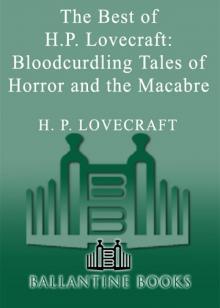 The Best of H.P. Lovecraft
The Best of H.P. Lovecraft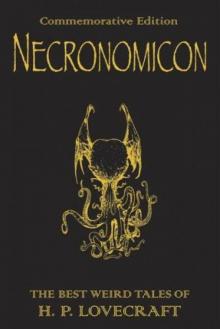 The Definitive H.P. Lovecraft: 67 Tales Of Horror In One Volume
The Definitive H.P. Lovecraft: 67 Tales Of Horror In One Volume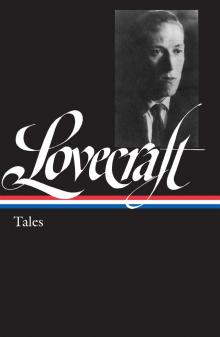 The Complete Works of H.P. Lovecraft
The Complete Works of H.P. Lovecraft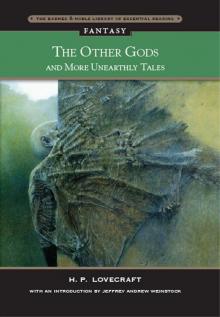 Other Gods and More Unearthly Tales
Other Gods and More Unearthly Tales Lovecraft's Fiction Volume I, 1905-1925
Lovecraft's Fiction Volume I, 1905-1925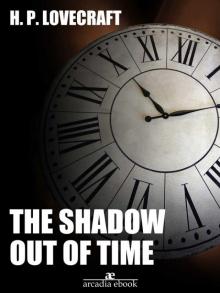 The Shadow Out of Time
The Shadow Out of Time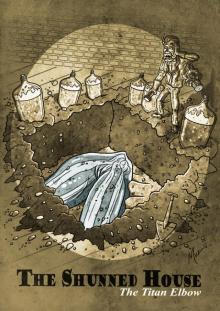 The Shunned House
The Shunned House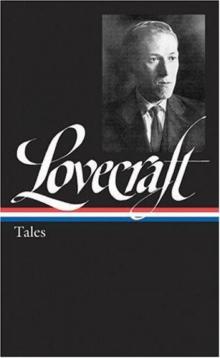 Lovecraft's Fiction Volume II, 1926-1928
Lovecraft's Fiction Volume II, 1926-1928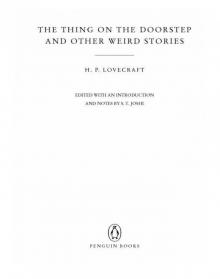 The Thing on the Doorstep and Other Weird Stories
The Thing on the Doorstep and Other Weird Stories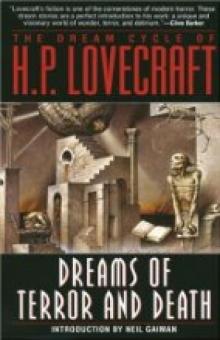 Dream Cycle of H. P. Lovecraft: Dreams of Terror and Death
Dream Cycle of H. P. Lovecraft: Dreams of Terror and Death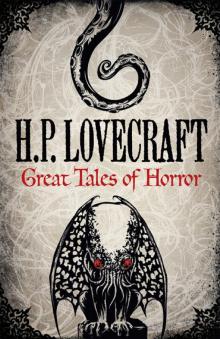 Great Tales of Horror
Great Tales of Horror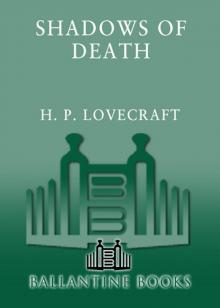 Shadows of Death
Shadows of Death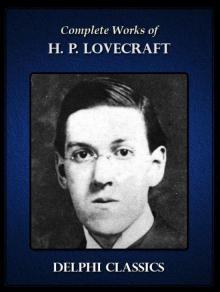 Delphi Complete Works of H. P. Lovecraft (Illustrated)
Delphi Complete Works of H. P. Lovecraft (Illustrated)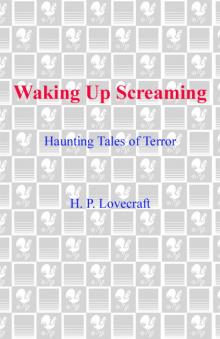 Waking Up Screaming: Haunting Tales of Terror
Waking Up Screaming: Haunting Tales of Terror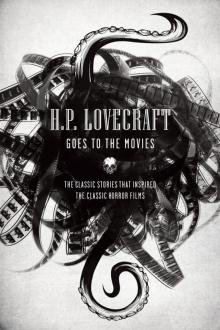 H.P. Lovecraft Goes to the Movies
H.P. Lovecraft Goes to the Movies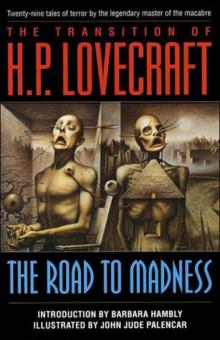 The Road to Madness
The Road to Madness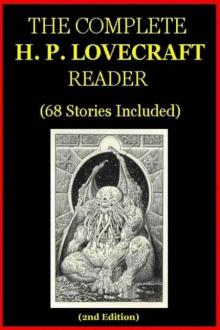 The Complete H.P. Lovecraft Reader (68 Stories)
The Complete H.P. Lovecraft Reader (68 Stories)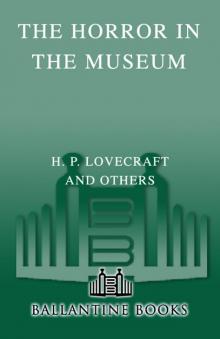 The Horror in the Museum
The Horror in the Museum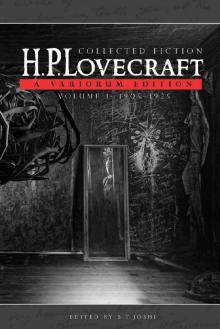 Collected Fiction Volume 1 (1905-1925): A Variorum Edition
Collected Fiction Volume 1 (1905-1925): A Variorum Edition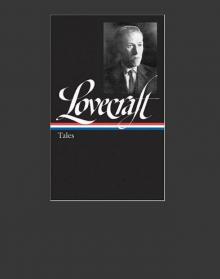 Lovecrafts_Fiction, vol.I_1905-1925
Lovecrafts_Fiction, vol.I_1905-1925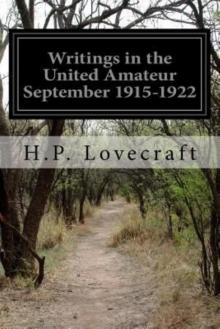 Writings in the United Amateur, 1915-1922
Writings in the United Amateur, 1915-1922 H.P. Lovecraft: The Complete Works
H.P. Lovecraft: The Complete Works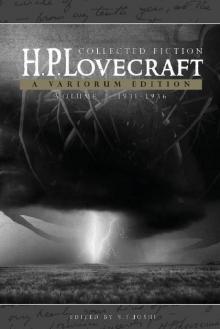 Collected Fiction Volume 3 (1931-1936): A Variorum Edition
Collected Fiction Volume 3 (1931-1936): A Variorum Edition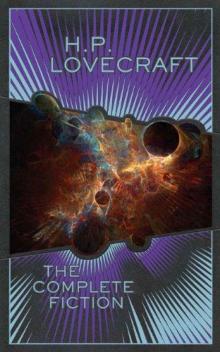 H.P. Lovecraft: The Complete Fiction
H.P. Lovecraft: The Complete Fiction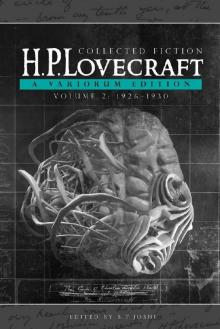 Collected Fiction Volume 2 (1926-1930): A Variorum Edition
Collected Fiction Volume 2 (1926-1930): A Variorum Edition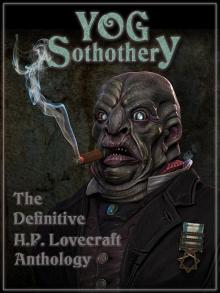 Yog Sothothery - The Definitive H.P. Lovecraft Anthology
Yog Sothothery - The Definitive H.P. Lovecraft Anthology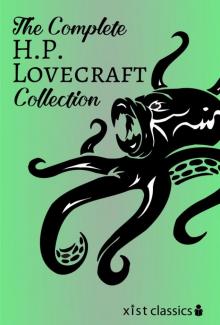 The Complete H.P. Lovecraft Collection (Xist Classics)
The Complete H.P. Lovecraft Collection (Xist Classics)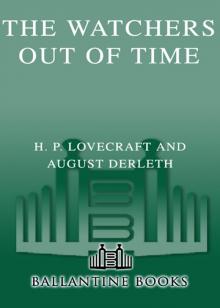 The Watchers Out of Time
The Watchers Out of Time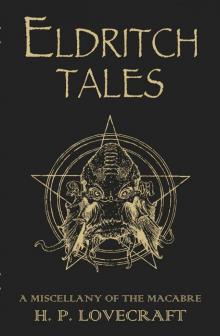 Eldritch Tales
Eldritch Tales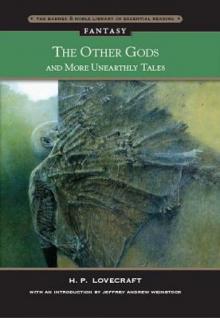 The Other Gods And More Unearthly Tales
The Other Gods And More Unearthly Tales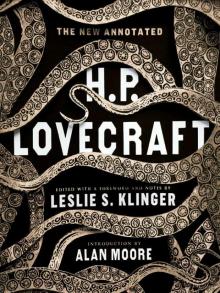 The New Annotated H. P. Lovecraft
The New Annotated H. P. Lovecraft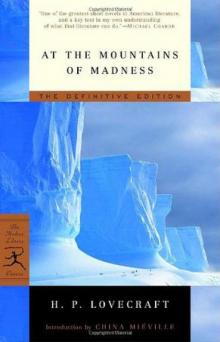 At the mountains of madness
At the mountains of madness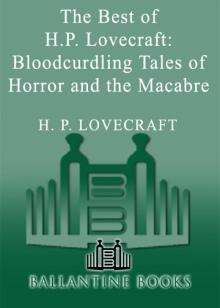 Bloodcurdling Tales of Horror and the Macabre
Bloodcurdling Tales of Horror and the Macabre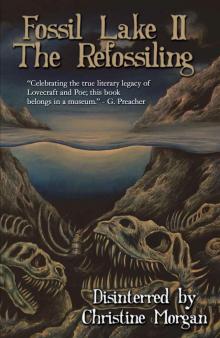 Fossil Lake II: The Refossiling
Fossil Lake II: The Refossiling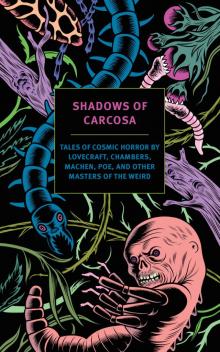 Shadows of Carcosa: Tales of Cosmic Horror by Lovecraft, Chambers, Machen, Poe, and Other Masters of the Weird
Shadows of Carcosa: Tales of Cosmic Horror by Lovecraft, Chambers, Machen, Poe, and Other Masters of the Weird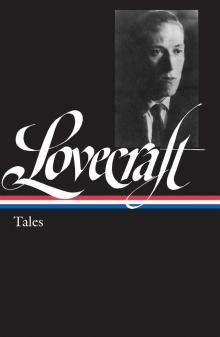 H. P. Lovecraft
H. P. Lovecraft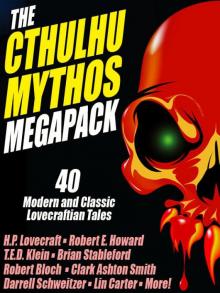 The Cthulhu Mythos Megapack
The Cthulhu Mythos Megapack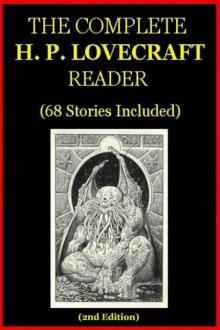 The Complete H. P. Lovecraft Reader (2nd Edition)
The Complete H. P. Lovecraft Reader (2nd Edition)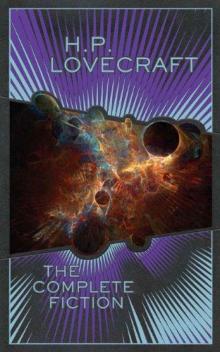 The Complete Fiction
The Complete Fiction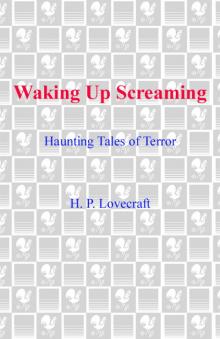 Waking Up Screaming
Waking Up Screaming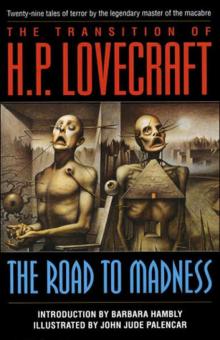 Transition of H. P. Lovecraft
Transition of H. P. Lovecraft![[1935] The Shadow Out of Time Read online](http://i1.bookreadfree.com/i2/04/12/1935_the_shadow_out_of_time_preview.jpg) [1935] The Shadow Out of Time
[1935] The Shadow Out of Time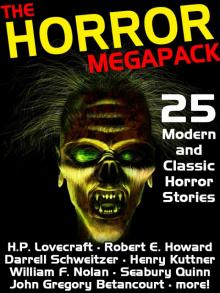 The Horror Megapack
The Horror Megapack